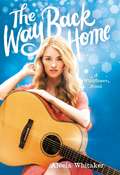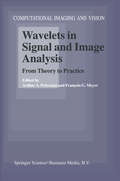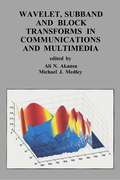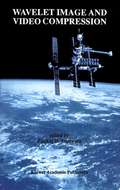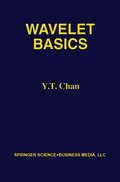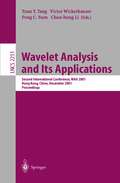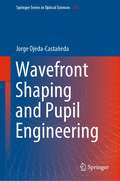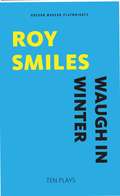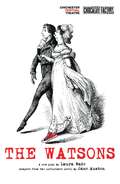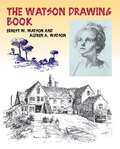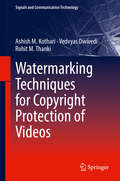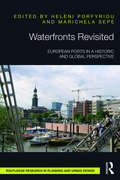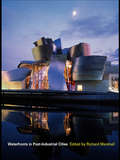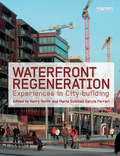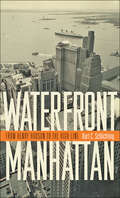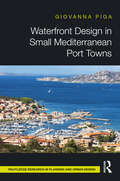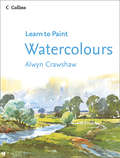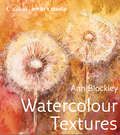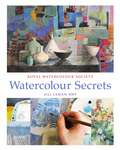- Table View
- List View
The Way Back Home (Wildflower #3)
by Alecia WhitakerMusic sensation Bird Barrett is hitting the road, headlining her first national tour after the launch of her second album. Singing to sold-out crowds can mess with a girl's sense of perspective, though. Luckily, Bird has her older brother, Dylan, and her best friend, Stella, along for the ride to keep her grounded. Then Dylan and Stella pair off as more than friends. Feeling left behind, Bird throws herself completely into her performances, cover shoots, and high-profile interviews. And the more she tries to distract herself with her career, the further she pushes everyone away-including her longtime crush, Adam Dean, who joined the tour as her opener. When Bird breaks down, she'll need help to find her footing again. But has she pushed everyone too far? In a life like this one, a country girl needs her family and friends-and maybe an old flame-most of all. A foot-stompin' finale to Alecia Whitaker's irresistible Wildflower series.
Wavelets in Signal and Image Analysis: From Theory to Practice (Computational Imaging and Vision #19)
by A. A. Petrosian F. G. MeyerDespite their novelty, wavelets have a tremendous impact on a number of modern scientific disciplines, particularly on signal and image analysis. Because of their powerful underlying mathematical theory, they offer exciting opportunities for the design of new multi-resolution processing algorithms and effective pattern recognition systems. This book provides a much-needed overview of current trends in the practical application of wavelet theory. It combines cutting edge research in the rapidly developing wavelet theory with ideas from practical signal and image analysis fields. Subjects dealt with include balanced discussions on wavelet theory and its specific application in diverse fields, ranging from data compression to seismic equipment. In addition, the book offers insights into recent advances in emerging topics such as double density DWT, multiscale Bayesian estimation, symmetry and locality in image representation, and image fusion. Audience: This volume will be of interest to graduate students and researchers whose work involves acoustics, speech, signal and image processing, approximations and expansions, Fourier analysis, and medical imaging.
Wavelet, Subband and Block Transforms in Communications and Multimedia (The Springer International Series in Engineering and Computer Science #504)
by Ali N. Akansu Michael J. MedleyWavelet and subband transforms have been of great interest in the fields of - gineering and applied mathematics. The theories of these powerful signal p- cessing tools have matured and many applications utilizing them are emerging in different disciplines. This book, comprised of eleven chapter contributions from prominent researchers in the field, focuses on communications and mul- media applications of wavelet and subband transforms. The first six chapters of this book deal with a variety of communications applications that significantly benefit from wavelet and subband theories. S- ilarly, the remaining five chapters present recent advances in multimedia - plications of wavelet and subband transforms. These chapters interconnect the requirements of applications with the underlying theory and their engineering solutions. Hence, the reader can easily trace the entire path from fundamentals to the purpose and merit of application in hand. A combined list of references for the entire volume is given at the end of the text that should be helpful to the interested reader for a further study. This book is anticipated to be of particular interest to engineers and sci- tists who want to learn about state-of-the-art subband and wavelet transform applications as well as their theoretical underpinnings. It can also serve as a supplementary book for graduate level engineering and applied mathematics courses on wavelet and subband transforms.
Wavelet Image and Video Compression (The Springer International Series in Engineering and Computer Science #450)
by Pankaj N. TopiwalaAn exciting new development has taken place in the digital era that has captured the imagination and talent of researchers around the globe - wavelet image compression. This technology has deep roots in theories of vision, and promises performance improvements over all other compression methods, such as those based on Fourier transforms, vectors quantizers, fractals, neural nets, and many others. It is this revolutionary new technology that is presented in Wavelet Image and Video Compression, in a form that is accessible to the largest audience possible. Wavelet Image and Video Compression is divided into four parts. Part I, Background Material, introduces the basic mathematical structures that underly image compression algorithms with the intention of providing an easy introduction to the mathematical concepts that are prerequisites for the remainder of the book. It explains such topics as change of bases, scalar and vector quantization, bit allocation and rate-distortion theory, entropy coding, the discrete-cosine transform, wavelet filters and other related topics. Part II, Still Image Coding, presents a spectrum of wavelet still image coding techniques. Part III, Special Topics in Still Image Coding, provides a variety of example coding schemes with a special flavor in either approach or application domain. Part IV, Video Coding, examines wavelet and pyramidal coding techniques for video data. Wavelet Image and Video Compression serves as an excellent reference and may be used as a text for advanced courses covering the subject.
Wavelet Basics
by Y. T. ChanSince the study of wavelets is a relatively new area, much of the research coming from mathematicians, most of the literature uses terminology, concepts and proofs that may, at times, be difficult and intimidating for the engineer. Wavelet Basics has therefore been written as an introductory book for scientists and engineers. The mathematical presentation has been kept simple, the concepts being presented in elaborate detail in a terminology that engineers will find familiar. Difficult ideas are illustrated with examples which will also aid in the development of an intuitive insight. Chapter 1 reviews the basics of signal transformation and discusses the concepts of duals and frames. Chapter 2 introduces the wavelet transform, contrasts it with the short-time Fourier transform and clarifies the names of the different types of wavelet transforms. Chapter 3 links multiresolution analysis, orthonormal wavelets and the design of digital filters. Chapter 4 gives a tour d'horizon of topics of current interest: wavelet packets and discrete time wavelet transforms, and concludes with applications in signal processing.
Wavelet Analysis and Its Applications: Second International Conference, WAA 2001, Hong Kong, China, December 18-20, 2001. Proceedings (Lecture Notes in Computer Science #2251)
by Yuan Y. Tang Victor Wickerhauser Pong C. Yuen Chun-Hung LiWavefront Shaping and Pupil Engineering (Springer Series in Optical Sciences #235)
by Jorge Ojeda-CastañedaThis book presents a simple, yet comprehensive, treatment of the basic principles and applications of novel phase masks and non-uniform optical windows under the increasingly popular umbrella term “pupil engineering.” It discusses current research topics in the areas of phase-space representations for engineering imaging devices with extended depth of field, as well as sparse optical sensing and emergent phenomena such as vortices and singularities, highlighting the heuristic applications of key concepts in novel models and their graphic representations. The book is appealing to anyone interested in robotic vision and is a valuable resource for upper-level students, teachers, scientists, and engineers in the field of image science, lasers, and digital image processing.
Waugh in Winter (Oberon Modern Playwrights)
by Roy SmilesWaugh in Winter is a piece about Evelyn Waugh, the acerbic right-wing author of Brideshead Revisited. A supposed BBC interviewer from Woman’s Hour has come to interview ‘the cultural dinosaur’. What begins as a useful ploy by Waugh to taunt and sneer at a woman of a lower class becomes an examination of his frightful snobbery and hatred of womankind. This stems from the love and rejection of his first wife ‘She Evelyn’ who haunts his memory whilst reminding him of the decent and loving man he once was.
The Watsons (Oberon Modern Plays)
by Laura WadeWhat happens when the writer loses the plot?Emma Watson is nineteen and new in town. She's been cut off by her rich aunt and dumped back in the family home. Emma and her sisters must marry, fast. If not, they face poverty, spinsterhood, or worse: an eternity with their boorish brother and his awful wife.Luckily there are plenty of potential suitors to dance with, from flirtatious Tom Musgrave to castle-owning Lord Osborne, who's as awkward as he is rich.So far so familiar. But there's a problem: Jane Austen didn't finish the story. Who will write Emma's happy ending now?Based on her incomplete novel, this sparklingly witty play looks under the bonnet of Jane Austen and asks: what can characters do when their author abandons them?
The Watson Drawing Book (Dover Art Instruction)
by Aldren A. Watson Ernest W. WatsonBoth serious students and amateurs will appreciate this guide to drawing, an ideal resource for those who want to develop their skills whether for professional reasons or simply for pleasure. Its comprehensive chapters cover all of the basic black-and-white drawing media: pencil, charcoal, pen and ink, brush and ink, quill and rush pens, felt-tip, wash, and mixed media. A showcase of technical methods allows students ample opportunity to experiment with finding their preferred approaches. Technical information includes instruction in such important basics as perspective, proportion, form analysis, light, and shade. Portrait drawing, figure sketching and outdoor sketching are also covered. In addition to the authors' sketches and studies, the text features numerous drawings in a variety of techniques by old masters as well as contemporary artists.
Watermarking Techniques for Copyright Protection of Videos (Signals and Communication Technology)
by Ashish M. Kothari Vedvyas Dwivedi Rohit M. ThankiThe book provides copyright protection approaches for videos using watermarking. The various watermarking techniques using various transforms such as discrete cosine transform (DCT), discrete wavelet transform (DWT) and singular value decomposition (SVD) for videos are presented. The book also provides video watermarking approach using compressive sensing (CS) theory. The presented watermarking techniques are designed and implemented using color digital videos. The performance of the presented techniques is evaluated using Peak Signal to Noise Ratio (PSNR) and Normalized Correlation (NC).
Waterfronts Revisited: European ports in a historic and global perspective
by Heleni Porfyriou Marichela SepeWaterfronts Revisited addresses the historical evolution of the relationship between port and city and re-examines waterfront development by looking at the urban territory and historical city in their complexity and entirety. By identifying guiding values, urban patterns and typologies, and local needs and experiences, cities can break the isolation of the harbor by reconnecting it to the urban structure; its functions, spaces and forms. Using the UNESCO recommendation for the "Historic Urban Landscape" as the guiding concept and a tool for managing urban preservation and change, this collection of essays illustrates solutions to issues of globalisation, commercialization of space and commoditisation of culture in waterfront development. Through sixteen selected case studies, Editors Heleni Porfyriou and Marichela Sepe offer planners and urban designers a broad spectrum of alternative solutions to waterfront regeneration interventions and redevelopments, addressing sustainability, regional cultural diversity, and the debate between conservation and transformation.
Waterfronts Revisited: European ports in a historic and global perspective
by Heleni Porfyriou Marichela SepeWaterfronts Revisited addresses the historical evolution of the relationship between port and city and re-examines waterfront development by looking at the urban territory and historical city in their complexity and entirety. By identifying guiding values, urban patterns and typologies, and local needs and experiences, cities can break the isolation of the harbor by reconnecting it to the urban structure; its functions, spaces and forms. Using the UNESCO recommendation for the "Historic Urban Landscape" as the guiding concept and a tool for managing urban preservation and change, this collection of essays illustrates solutions to issues of globalisation, commercialization of space and commoditisation of culture in waterfront development. Through sixteen selected case studies, Editors Heleni Porfyriou and Marichela Sepe offer planners and urban designers a broad spectrum of alternative solutions to waterfront regeneration interventions and redevelopments, addressing sustainability, regional cultural diversity, and the debate between conservation and transformation.
Waterfronts in Post-Industrial Cities
by Richard MarshallMost books on waterfronts deal with a relatively narrow collection of cities and projects; one might describe them as the 'top ten' list of waterfront revitalisation projects. For instance, Boston and Baltimore are now the stuff of waterfront redevelopment legend. Waterfronts in Post-Industrial Cities is a second generation waterfront publication which reflects on recent and contemporary developments. Amsterdam, Boston, Genoa, Sydney and Vancouver are successful examples of cities that faced considerable challenges in their revitalisation efforts. Bilbao, Havana, Las Palmas de Gran Canaria and Shanghai are contemporary examples that represent the emerging contexts for waterfront revitalisation today.Four themes form the basis of this book and provide a structure for considering particular aspects of waterfront redevelopment - connection to the waterfront, remaking the city image on the waterfront, port and city relations and the new waterfronts in historic cities. Broad issues that might be applicable to a variety of situations are dealt with alongside specific city case studies.
Waterfronts in Post-Industrial Cities
by Richard MarshallMost books on waterfronts deal with a relatively narrow collection of cities and projects; one might describe them as the 'top ten' list of waterfront revitalisation projects. For instance, Boston and Baltimore are now the stuff of waterfront redevelopment legend. Waterfronts in Post-Industrial Cities is a second generation waterfront publication which reflects on recent and contemporary developments. Amsterdam, Boston, Genoa, Sydney and Vancouver are successful examples of cities that faced considerable challenges in their revitalisation efforts. Bilbao, Havana, Las Palmas de Gran Canaria and Shanghai are contemporary examples that represent the emerging contexts for waterfront revitalisation today.Four themes form the basis of this book and provide a structure for considering particular aspects of waterfront redevelopment - connection to the waterfront, remaking the city image on the waterfront, port and city relations and the new waterfronts in historic cities. Broad issues that might be applicable to a variety of situations are dealt with alongside specific city case studies.
Waterfront Regeneration: Experiences in City-building
by Harry Smith Maria Soledad Garcia FerrariWaterfront regeneration and development represents a unique opportunity to spatially and visually alter cities worldwide. However, its multi-faceted nature entails city-building with all its complexity including the full range of organizations involved and how they interact. This book examines how more inclusive stakeholder involvement has been attempted in the nine cities that took part in the European Union funded Waterfront Communities Project. It focuses on analyzing the experience of creating new public realms through city-building activities. These public realms include negotiation arenas in which different discourses meet and are created – including those of planners, urban designers and architects, politicians, developers, landowners and community groups – as well as physical environments where the new city districts' public life can take place, drawing lessons for waterfront regeneration worldwide. The book opens with an introduction to waterfront regeneration and then provides a framework for analyzing and comparing waterfront redevelopments, which is followed by individual case study chapters highlighting specific topics and issues including land ownership and control, decision making in planning processes, the role of planners in public space planning, visions for waterfront living, citizen participation, design-based waterfront developments, a social approach to urban waterfront regeneration and successful place making. Significant findings include the difficulty of integrating long term 'sustainability' into plans and the realization that climate change adaptation needs to be explicitly integrated into regeneration planning. The transferable insights and ideas in this book are ideal for practising and student urban planners and designers working on developing plans for long-term sustainable waterfront regeneration anywhere in the world.
Waterfront Regeneration: Experiences in City-building
by Harry Smith Maria Soledad Garcia FerrariWaterfront regeneration and development represents a unique opportunity to spatially and visually alter cities worldwide. However, its multi-faceted nature entails city-building with all its complexity including the full range of organizations involved and how they interact. This book examines how more inclusive stakeholder involvement has been attempted in the nine cities that took part in the European Union funded Waterfront Communities Project. It focuses on analyzing the experience of creating new public realms through city-building activities. These public realms include negotiation arenas in which different discourses meet and are created – including those of planners, urban designers and architects, politicians, developers, landowners and community groups – as well as physical environments where the new city districts' public life can take place, drawing lessons for waterfront regeneration worldwide. The book opens with an introduction to waterfront regeneration and then provides a framework for analyzing and comparing waterfront redevelopments, which is followed by individual case study chapters highlighting specific topics and issues including land ownership and control, decision making in planning processes, the role of planners in public space planning, visions for waterfront living, citizen participation, design-based waterfront developments, a social approach to urban waterfront regeneration and successful place making. Significant findings include the difficulty of integrating long term 'sustainability' into plans and the realization that climate change adaptation needs to be explicitly integrated into regeneration planning. The transferable insights and ideas in this book are ideal for practising and student urban planners and designers working on developing plans for long-term sustainable waterfront regeneration anywhere in the world.
Waterfront Manhattan: From Henry Hudson to the High Line
by Kurt C. SchlichtingFor hundreds of years, the shorefront of Manhattan Island served as the country;€™s center of trade, shipping, and commerce. With its maritime links across the oceans, along the Atlantic coast, and inland to the Midwest and New England, Manhattan became a global city and home to the world;€™s busiest port. It was a world of docks, ships, tugboats, and ferries, filled with cargo and freight, a place where millions of immigrants entered the Promised Land. In Waterfront Manhattan, Kurt C. Schlichting tells the story of the Manhattan waterfront as a struggle between public and private control of New York;€™s priceless asset. Nature provided New York with a sheltered harbor but presented the city with a challenge: to find the necessary capital to build and expand the maritime infrastructure. From colonial times until after the Civil War, the city ceded control of the waterfront to private interests, excluding the public entirely and sparking a battle between shipping companies, the railroads, and ferries for access to the waterfront. In the second half of the nineteenth century, the City of New York regained control of the waterfront, but a whirlwind of forces beyond the control of either public or private interests;¢;‚¬;€?technological change in the form of the shipping container and the jet airplane;¢;‚¬;€?devastated the city;€™s maritime world. The city slowly and painfully recovered. Visionaries reimagined the waterfront, and today the island is almost completely surrounded by parkland, the world of piers and longshoremen gone, replaced by luxury housing and tourist attractions.Waterfront Manhattan is a wide-ranging history that will dazzle anyone who is fascinated by New York.
Waterfront Manhattan: From Henry Hudson to the High Line
by Kurt C. SchlichtingFor hundreds of years, the shorefront of Manhattan Island served as the country;€™s center of trade, shipping, and commerce. With its maritime links across the oceans, along the Atlantic coast, and inland to the Midwest and New England, Manhattan became a global city and home to the world;€™s busiest port. It was a world of docks, ships, tugboats, and ferries, filled with cargo and freight, a place where millions of immigrants entered the Promised Land. In Waterfront Manhattan, Kurt C. Schlichting tells the story of the Manhattan waterfront as a struggle between public and private control of New York;€™s priceless asset. Nature provided New York with a sheltered harbor but presented the city with a challenge: to find the necessary capital to build and expand the maritime infrastructure. From colonial times until after the Civil War, the city ceded control of the waterfront to private interests, excluding the public entirely and sparking a battle between shipping companies, the railroads, and ferries for access to the waterfront. In the second half of the nineteenth century, the City of New York regained control of the waterfront, but a whirlwind of forces beyond the control of either public or private interests;¢;‚¬;€?technological change in the form of the shipping container and the jet airplane;¢;‚¬;€?devastated the city;€™s maritime world. The city slowly and painfully recovered. Visionaries reimagined the waterfront, and today the island is almost completely surrounded by parkland, the world of piers and longshoremen gone, replaced by luxury housing and tourist attractions.Waterfront Manhattan is a wide-ranging history that will dazzle anyone who is fascinated by New York.
Waterfront Design in Small Mediterranean Port Towns
by Giovanna PigaThis book addresses issues that waterfronts face in small Mediterranean port towns due to increases in the tourism industry. Integrating theory and pragmatic approaches, Waterfront Design in Small Port Towns proposes a design matrix which can go on to be implemented in waterfronts globally. The demand for a sustainable regeneration of the urban waterfront is constantly growing and represents the ultimate challenge to preserve and value the uniqueness of the region and to activate an overall redevelopment of small port towns. To understand these issues, Waterfront Design in Small Port Towns contains an in-depth investigation of the cultural and environmental assets and spatial socio-economic factors of the urban waterfront. This is conducted through the author’s original methodological framework, the Waterfront Design Matrix, which responds to the specific scales and idiosyncrasies of the archetypical waterfront. The methodological and theoretical approach developed in the book can be applied to different geographical locations and countries, presenting comparable characteristics. This book is an ideal read for professionals and students alike with an interest in urban design and planning.
Waterfront Design in Small Mediterranean Port Towns
by Giovanna PigaThis book addresses issues that waterfronts face in small Mediterranean port towns due to increases in the tourism industry. Integrating theory and pragmatic approaches, Waterfront Design in Small Port Towns proposes a design matrix which can go on to be implemented in waterfronts globally. The demand for a sustainable regeneration of the urban waterfront is constantly growing and represents the ultimate challenge to preserve and value the uniqueness of the region and to activate an overall redevelopment of small port towns. To understand these issues, Waterfront Design in Small Port Towns contains an in-depth investigation of the cultural and environmental assets and spatial socio-economic factors of the urban waterfront. This is conducted through the author’s original methodological framework, the Waterfront Design Matrix, which responds to the specific scales and idiosyncrasies of the archetypical waterfront. The methodological and theoretical approach developed in the book can be applied to different geographical locations and countries, presenting comparable characteristics. This book is an ideal read for professionals and students alike with an interest in urban design and planning.
Watercolours: Watercolours (Learn to Paint)
by Alwyn CrawshawAlwyn Crawshaw has a very loyal following among amateur painters, and this book is an ideal introduction to this popular medium.
Watercolour Tips (Collins Gem)
by Ian KingPacked full of tips for the aspiring watercolourist, its handy format makes it ideal for quick reference either in the studio or out in the field.
Watercolour Textures (Collins Artist’s Studio)
by Ann BlockleyAnn Blockley is a very successful artist, known for the innovative way in which she uses texture as a key element in her work. This book, in Collins Artist’s Studio series, looks at how she achieves her stunning effects and provides essential guidelines for the intermediate painter wishing to develop this aspect of their own painting.
Watercolour Secrets
by Jill LemanThis beautiful book showcases the work of the members of the prestigious Royal Watercolour Society, including Ken Howard, Sonia Lawson and many other fine and well-known contemporary watercolour painters. Each artist discusses their inspiration and gives their best practical advice for working in this medium, offering a fascinating insight into the methods and techniques of the professional artists. Have you ever wondered how an artist starts a piece, what keeps them working at it, how they make marks and mix colour or when they know a painting is finished? This intimate exploration of the daily creative striving of the artist and their patient technical procedures will fascinate professional and aspiring artists, collectors and anyone with a general interest in painting.
